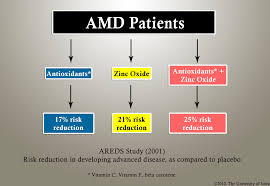Innovative Approaches to AMD Disease Treatment: A Comprehensive Guide

Age-related macular degeneration (AMD) is a common eye condition that affects millions of people worldwide, leading to vision loss in the elderly. As research advances, new amd disease treatment options are emerging, offering hope to those affected by this degenerative condition. In this article, we’ll explore the latest amd disease treatment methods, focusing on their effectiveness, accessibility, and impact on patients’ quality of life.
What is AMD?
Age-related macular degeneration (AMD) is a progressive eye disease that affects the macula, the central part of the retina responsible for sharp vision. There are two main types of AMD: dry (atrophic) and wet (neovascular). The dry form is more common and progresses slowly, while the wet form is less common but more severe, often leading to rapid vision loss.
Current AMD Disease Treatment Options
- Anti-VEGF Injections
One of the most widely used amd disease treatments is anti-VEGF (vascular endothelial growth factor) therapy. These injections help reduce abnormal blood vessel growth in the retina, a hallmark of wet AMD. Drugs like ranibizumab (Lucentis), aflibercept (Eylea), and bevacizumab (Avastin) are commonly used in this treatment. Patients typically receive injections every 4-8 weeks, which can stabilize vision and, in some cases, even improve it.
- Photodynamic Therapy (PDT)
Photodynamic therapy is another effective amd disease treatment, particularly for certain types of wet AMD. This procedure involves injecting a light-sensitive drug into the bloodstream, which then accumulates in the abnormal blood vessels in the eye. A laser is used to activate the drug, causing the blood vessels to close and preventing further damage to the retina.
- Laser Therapy
Laser therapy has been used as a treatment for AMD, particularly in its earlier stages. While it is less commonly used today due to the success of anti-VEGF injections, it remains a viable option for certain cases. The laser is used to destroy abnormal blood vessels, slowing the progression of the disease.
- Supplements for Dry AMD
For patients with dry AMD, dietary supplements rich in vitamins C and E, zinc, copper, and lutein can help slow the disease’s progression. These supplements, often referred to as the AREDS2 formula, have been shown to reduce the risk of developing advanced AMD in patients with intermediate-stage disease.
Emerging AMD Disease Treatment Methods
- Gene Therapy
Gene therapy is an exciting frontier in amd disease treatment. Researchers are exploring ways to correct genetic defects that contribute to AMD. Early trials have shown promise, with some patients experiencing stabilization or improvement in their vision. This treatment could potentially offer a one-time solution, reducing the need for ongoing injections or other therapies.
- Stem Cell Therapy
Stem cell therapy is another promising approach to treating AMD. This treatment involves replacing damaged retinal cells with healthy ones derived from stem cells. While still in the experimental stage, stem cell therapy has the potential to restore vision in patients with advanced AMD.
- Artificial Retinas
Developing artificial retinas, or retinal prostheses, is a cutting-edge area of research in amd disease treatment. These devices aim to restore vision by bypassing damaged retinal cells and directly stimulating the remaining healthy cells. Although this technology is still in its infancy, it holds great promise for patients with severe vision loss due to AMD.
- Complement Inhibitors
Complement inhibitors are a new class of drugs being investigated for the treatment of dry AMD. These drugs target the complement system, a part of the immune system that is thought to play a role in the progression of AMD. By inhibiting specific components of this system, researchers hope to slow or stop the progression of dry AMD.
The Importance of Early Detection and Regular Monitoring
Early detection and regular monitoring are crucial in managing AMD. Routine eye exams can detect early signs of the disease, allowing for timely intervention and treatment. Patients diagnosed with AMD should follow their doctor’s recommendations for treatment and monitoring to prevent further vision loss.
Lifestyle Changes and AMD Prevention
While there is no guaranteed way to prevent AMD, certain lifestyle changes can reduce the risk of developing the disease or slow its progression. These include:
- Healthy Diet: A diet rich in leafy greens, fish, and other foods high in omega-3 fatty acids and antioxidants can support eye health.
- Regular Exercise: Staying active can improve overall health and reduce the risk of developing AMD.
- Quit Smoking: Smoking is a significant risk factor for AMD, and quitting can reduce the risk of developing the disease.
- Protect Your Eyes: Wearing sunglasses that block UV rays can help protect your eyes from sun damage, which may contribute to AMD.
Patient Support and Resources
Living with AMD can be challenging, but numerous resources are available to support patients. Vision rehabilitation programs, support groups, and low-vision aids can help patients maintain independence and quality of life. Organizations such as the American Macular Degeneration Foundation (AMDF) and the Macular Society offer valuable information and support for those affected by AMD.
Conclusion
The field of amd disease treatment is rapidly evolving, with new therapies and technologies offering hope to those affected by this debilitating condition. From established treatments like anti-VEGF injections to emerging options like gene therapy and stem cell research, there are more options than ever for managing AMD and preserving vision. By staying informed and working closely with healthcare providers, patients with AMD can take proactive steps to protect their eyesight and maintain their quality of life.
If you or a loved one is living with AMD, consider discussing these treatment options with an eye care professional to determine the best approach for your individual needs.
